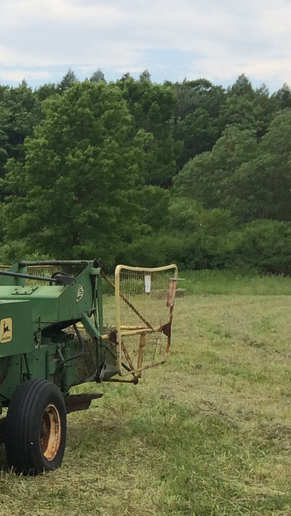Here is a video I put up several days ago of us baling hay. I’ve got a GoPro like Camera, DJI OSMO Action Camera and rigged up a
magnetic mount so I could record from different spots around the equipment. In this video, the camera is mounted to the twine box. No voice talking,
just some intermittent text regarding the pan kicker and why we have/use it.
If you’ve never seen a John Deere Pan Kicker up close at work, this is the video...
Enjoy!
Pure Pan Kicker
magnetic mount so I could record from different spots around the equipment. In this video, the camera is mounted to the twine box. No voice talking,
just some intermittent text regarding the pan kicker and why we have/use it.
If you’ve never seen a John Deere Pan Kicker up close at work, this is the video...
Enjoy!
Pure Pan Kicker


